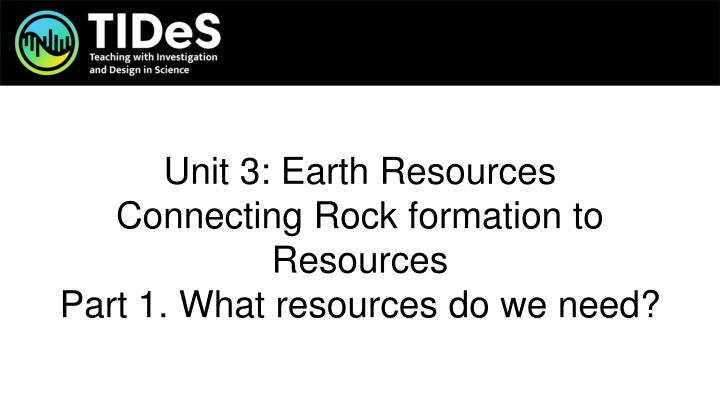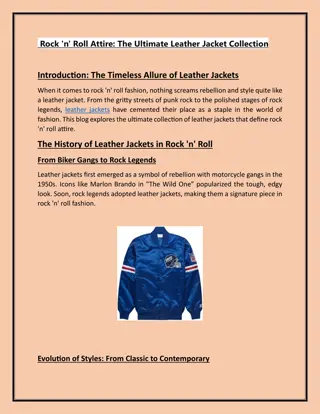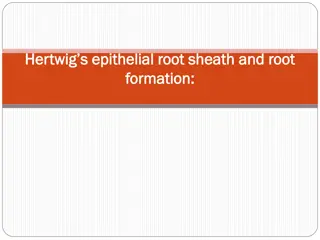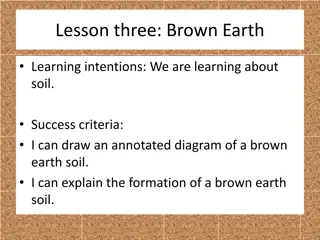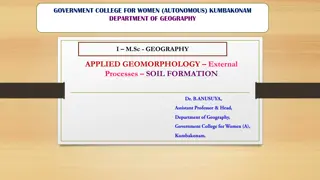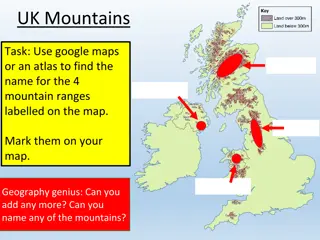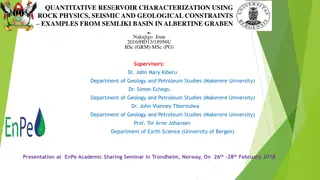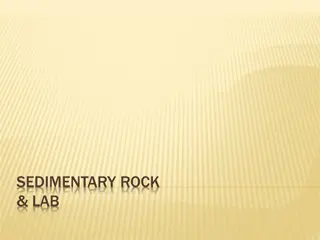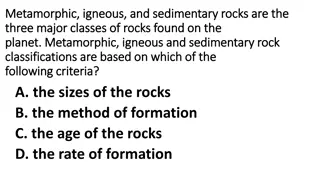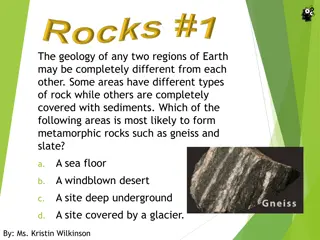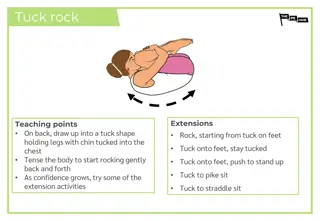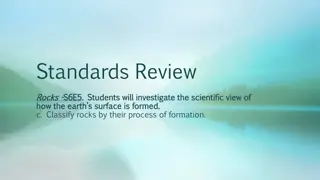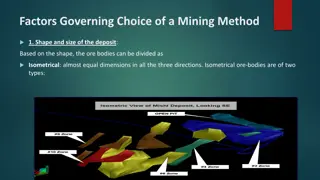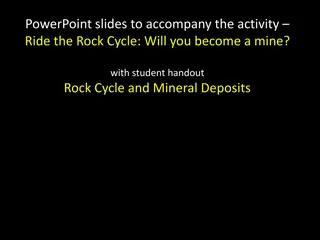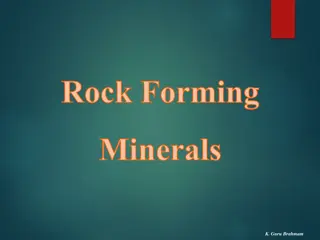Connecting Rock Formation to Essential Resources
Geology plays a crucial role in identifying and accessing valuable resources essential for society. Understanding how geological processes shape the earth's resources helps in locating and extracting ores, minerals, and materials vital for various sectors. Explore the formation of geological resources, types of deposits, and the importance of different geological materials like steel, copper, cement, gold, and more.
Download Presentation

Please find below an Image/Link to download the presentation.
The content on the website is provided AS IS for your information and personal use only. It may not be sold, licensed, or shared on other websites without obtaining consent from the author.If you encounter any issues during the download, it is possible that the publisher has removed the file from their server.
You are allowed to download the files provided on this website for personal or commercial use, subject to the condition that they are used lawfully. All files are the property of their respective owners.
The content on the website is provided AS IS for your information and personal use only. It may not be sold, licensed, or shared on other websites without obtaining consent from the author.
E N D
Presentation Transcript
Unit 3: Earth Resources Connecting Rock formation to Resources Part 1. What resources do we need?
How do we find geological resources? Key Concept: Geological resources form as a result of a specific set of geological processes and conditions If we understand HOW they form, then we can interpret the rocks to find them Note! These processes are complex and we will look at simplifications of all of them.
Geological Resources Introductory Group Discussion (5 minutes): What is a geological resource? What kinds of objects contain geological resources? Terminology: Element: Smallest unit of material that makes up everything in the world. Metals are elements Ore: Raw materials that contains a valuable substance (e.g., Hematite, a mineral, is an ore of iron, an element)
What is a Deposit? An area where economically valuable resources are concentrated enough to be mined Has to be accessible for mining Has to be concentrated enough to make mining profitable Has to have enough material to make mining profitable Basic types of deposits: Associated with volcanoes or hot fluids (Igneous and Hydrothermal) Associated with layers of sedimentary rocks (Sedimentary) As a result of biological processes (Fossil fuels)
What Geological Resources Do We Need? Jigsaw activity Goal: Come up with a list of the most important/common geological resources 1. Whole class discussion: What are major sectors of society? 2. Class groups: Each group has one sector of society. Make a list of the resources that are most necessary for that sector to be functional. 3. Use the Excel Spreadsheet to determine what the ores/materials are in those resources. 4. Rearrange groups to share lists between groups.
Resource Steel Copper Cement Gold Aluminum Salt Geological Material Ore/Mineral Iron Copper N/A Gold Aluminum N/A Rock banded iron formation Veins in igneous rocks Limestone Veins in igneous rocks Bauxite Rock Salt Geological setting Ancient marine sedimentary rocks (~1.4 BYA) Volcanic activity/subduction zones Sedimentary rocks deposited in shallow marine environments Volcanic activity/subduction zones Forms from weathering of volcanic clays in warm, humid environments Sedimentary rocks that form due to evaporation of seawater Hematite/magnetite Native Copper, Chalcopyrite calcite Native Gold Bauxite Halite Sedimentary rock that forms when dead plants are buried in anoxic environments Coal N/A Potassium and Phosphorous Coal Coal Fertilizer Apatite, Potassium salts Marine evaporites Sedimentary evaporite rocks Lithium for batteries Lithium brine or pegmatite minerals (e.g. lepidolite) Some groundwater or very felsic, coarse-grained rocks (pegmatites) Lithium Organic material trapped in pore spaces of sedimentary rocks Sandstones, limestones and shales with abundant pore spaces Mafic and ultramafic igneous rocks and placer deposits River deltas/coastal areas with abundant sediment input and deep enough water to become hypoxic Petroleum Organic material Titanium Titanium Llmenite, Rutile Ophiolites, oceanic volcanoes Glass Quartz sands Quartz Quartz sands or sandstone Heavily weathered sands Gravel Plastics Sand and gravel See petroleum Sand and gravel Coarse clastic sediments River channels Metamorphic rocks and Volcanic massive sulfices Lead Lead Galena Geothermal activity and hydrothermal vents Sheetrock Gypsum Gypsum Rock Gypsum Evaporating seawater Abrasives, cutting tools, gems Very rare, very hot volcanic eruptions from deeper in the mantle underneath old continental crust Diamond Diamond Kimberlite Abrasives, cutting tools, gems Metamorphic rocks and occasionally felsic pegmatites Corundum Corundum Very high grade metamorphism and ultramafic pegmatites
